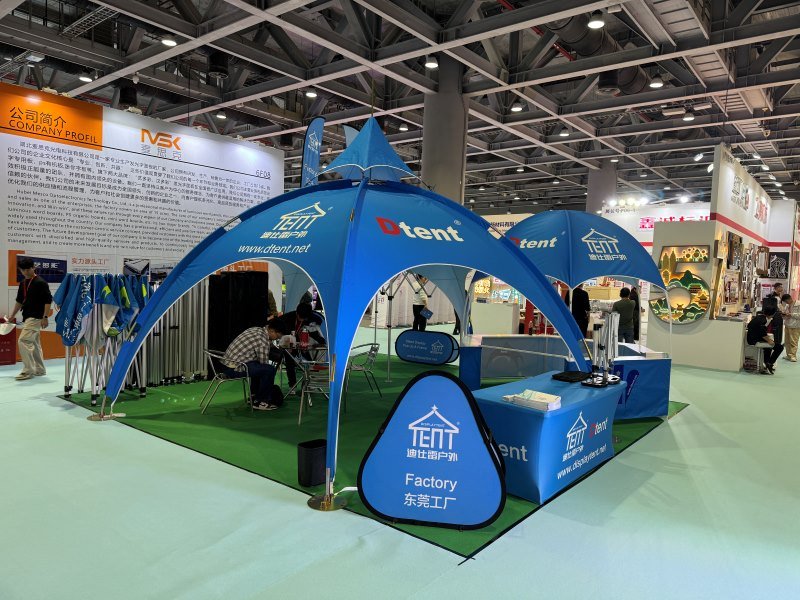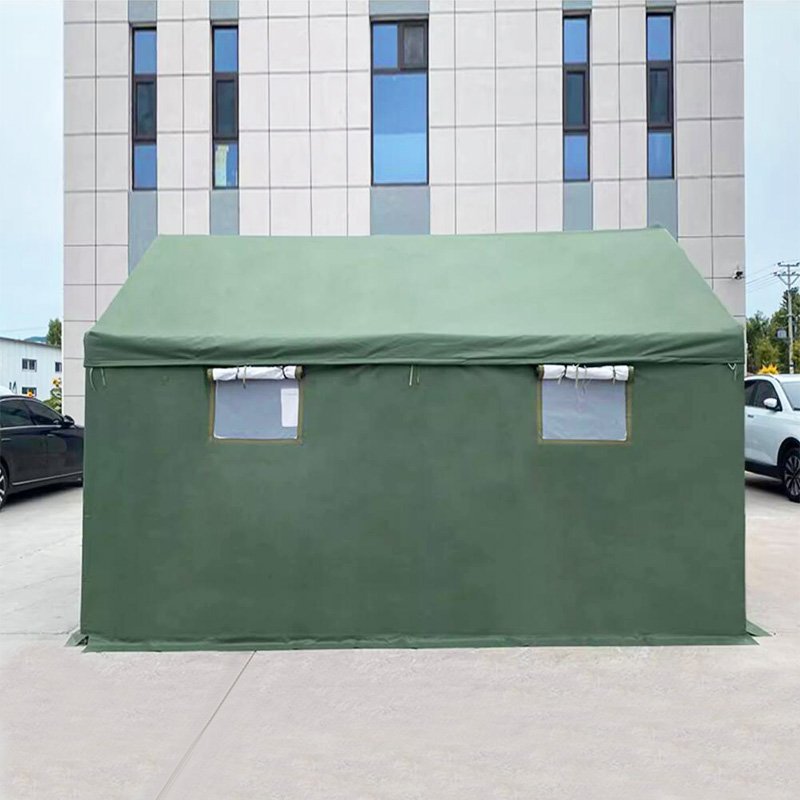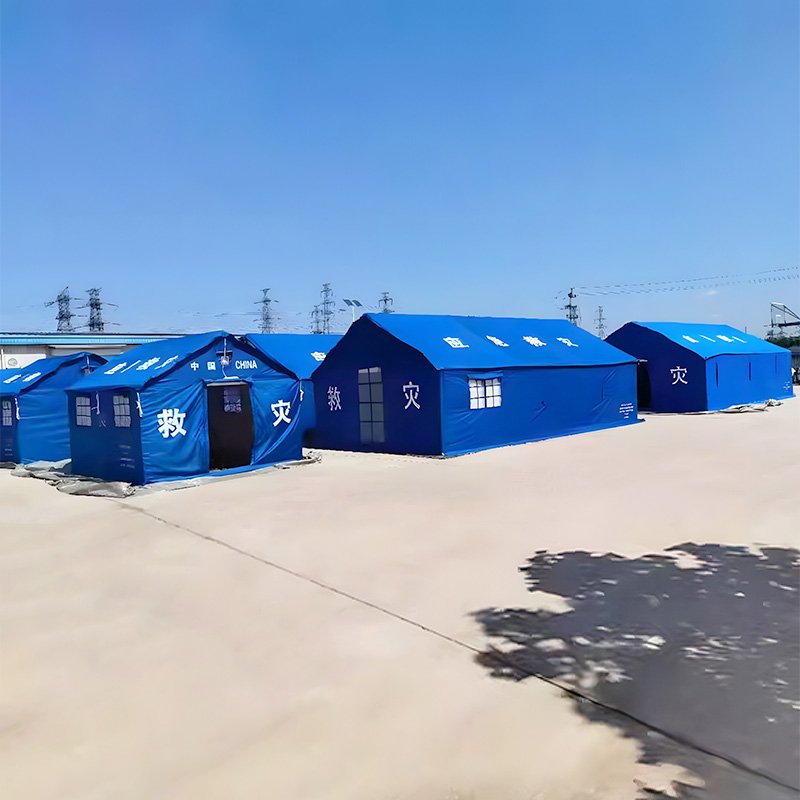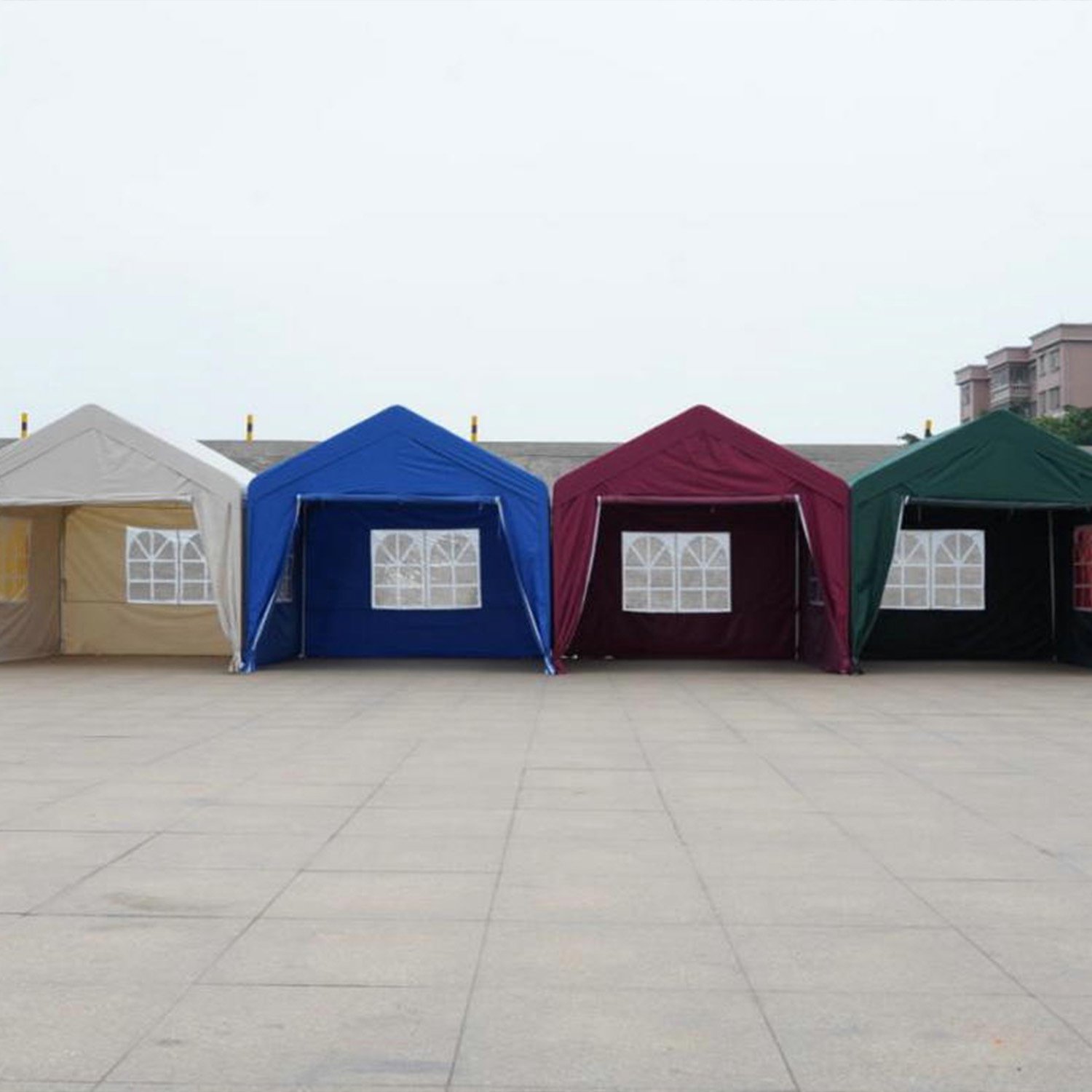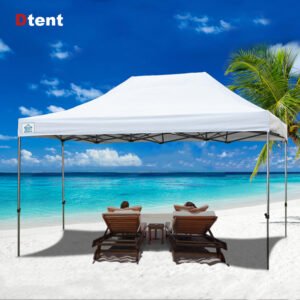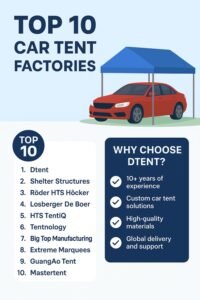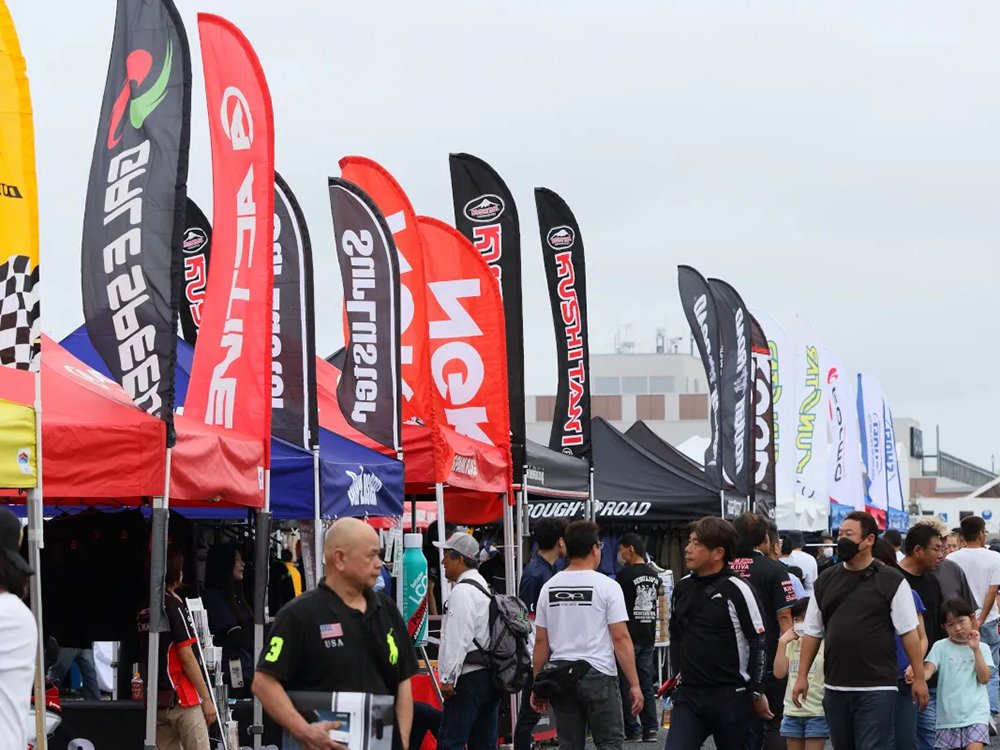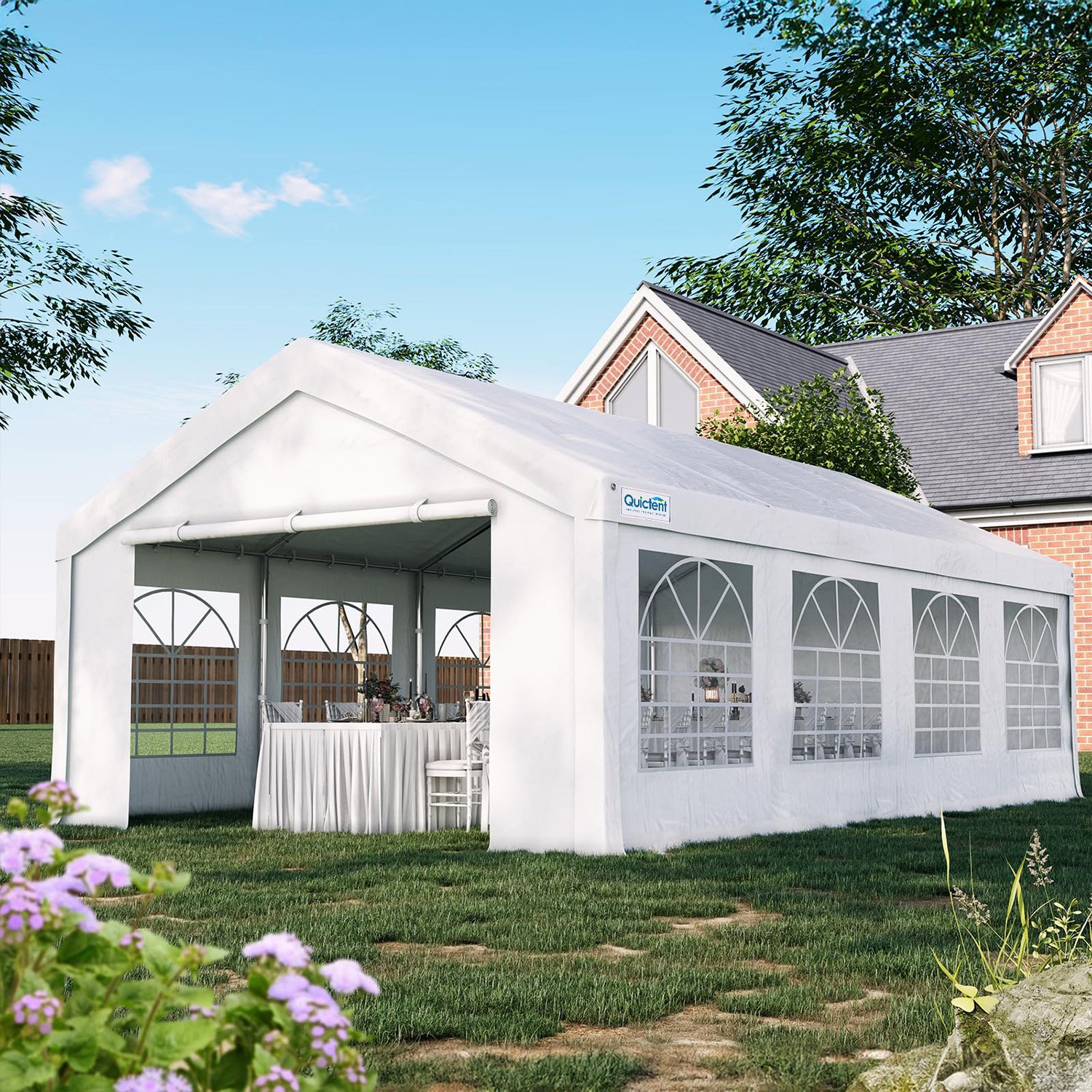Last Updated on 07/02/2025 by dtent.net
In the previous article, we discussed the research background and significance of customized outdoor tents and understood the current global market situation of customized tents. Please refer to the previous article –Had to learn about custom tents professional knowledge
In this article, we will learn about the history and development of outdoor tents, the classification and characteristics of tents, how to design the structure of outdoor tents, how to choose outdoor tent materials, the production process of outdoor tents, and the application scenarios of outdoor tents.
5-Application and maintenance of outdoor custom tents
Outdoor custom tents are widely used in activities such as hiking, mountaineering, and camping in the wild. In different application scenarios, the selection and construction methods of tents will also be different. For example, when camping in high-altitude areas, it is necessary to choose tents with strong windproof and thermal insulation performance; while in low-altitude tropical rainforest areas, more attention is paid to the breathability and insect-proof functions of the tents.
Correct use and maintenance methods are essential to extend the service life of tents. Users should clean the tent regularly, avoid long-term exposure to harsh environments, and keep the tent dry and ventilated during storage. In addition, accessories such as tent support poles and drawstrings also need to be regularly inspected and maintained to ensure that they are intact.
In terms of carrying and storage, it is recommended to fold the tent into a compact shape and use a special packaging bag for protection to prevent damage during transportation. At the same time, avoid pressing heavy objects on the tent to prevent deformation or breakage.
5.1 The history and development of tents
5.1.1 Origin and development
This temporary shelter can be traced back to the distant prehistoric period. At that time, in order to resist the harsh natural environment and the invasion of wild beasts, humans cleverly used natural materials such as animal skins and barks to build simple shelters, which was the prototype of the tent. With the continuous progress and development of society, the material and form of tents have also undergone earth-shaking changes, gradually evolving into a lightweight and portable mobile residence. In the lives of nomadic peoples, tents have become their “homes” that they carry with them, which are convenient for relocation and can provide private space to shelter from wind and rain. In the military field, tents are widely used in field marches and stationings because of their fast construction and flexible mobility. Explorers regard tents as important partners on their adventures, accompanying them through mountains and rivers and challenging the limits of nature.
Entering modern society, the application scenarios of tents are becoming more and more extensive. In addition to the traditional military and exploration fields, tents have gradually entered the lives of ordinary people. The rise of outdoor activities and people’s pursuit of a healthy lifestyle have made tents a fashionable outdoor equipment. Whether it is family camping, hiking, music festivals, outdoor exhibitions and other activities, tents play an indispensable role. In order to meet the needs of different consumers, modern tents have also incorporated more technological elements and humanized considerations in design and manufacturing. For example, high-tech fabrics are used to improve the waterproof and breathable performance of tents, ensuring that users can have a comfortable living environment in all weather conditions; lightweight and high-strength support structures make the tents as stable as possible while reducing weight, making them easy to carry and transport.
5.1.2 Modern applications and development
In modern society, the application of tents has far exceeded its original sheltering function. With the advancement of technology and the diversification of outdoor activities, the design of tents has become increasingly complex and refined. In order to meet the needs of users in different environments, modern tents often have a variety of functional features, such as waterproof, breathable, windproof, warm, etc. The realization of these functions is inseparable from in-depth research and continuous innovation of fabrics, structures and manufacturing processes.
Modern tents have also made significant progress in humanized design. For example, vents and windows are added to improve the ventilation performance inside the tent to ensure that users can still feel the fresh air in a closed environment; the internal space layout is optimized to provide sufficient storage space and comfortable sleeping areas to allow users to spend time outdoors You can also enjoy the warmth and convenience of home. The consideration of these design details not only improves the experience of using the tent, but also further promotes the innovation and development of the tent industry.
With the increasing awareness of global environmental protection, modern tents are paying more attention to environmental protection and sustainability in material selection and manufacturing processes. Many tent manufacturers have begun to use recyclable materials or environmentally friendly fabrics to make tents to reduce environmental pollution. At the same time, they are constantly optimizing production processes, reducing energy consumption and waste emissions during the production process, and striving to achieve green and environmentally friendly production goals. These initiatives not only help protect the global environment, but also lay a solid foundation for the sustainable development of the tent industry.
5.2 Classification and characteristics of tents
Tents are important equipment for outdoor activities. They can be divided into many types according to their uses, structures and materials. Each type of tent has its own unique characteristics and applicable scenarios.
5.2.1 Classification by tent use
1. Camping tents
Camping tents are the most common type of tents and are suitable for all kinds of camping activities. This type of tent is usually designed with a large internal space to accommodate multiple people and is equipped with sufficient storage space. Camping tents focus on stability and durability to cope with complex outdoor environments. At the same time, in order to facilitate carrying and transportation, camping tents will also adopt a lightweight design.
2. Mountaineering tents
Mountaineering tents are designed for mountaineering activities, emphasizing lightness and high strength. Since a lot of equipment needs to be carried during mountaineering, mountaineering tents are usually made of lightweight materials to reduce the weight. In addition, mountaineering tents also have good windproof, waterproof and breathable properties to ensure the safety of climbers in bad weather conditions.
3. Outdoor advertising tents
As a common promotional tool, outdoor advertising tents are widely used in various commercial activities and public places. Its size varies to meet different scenarios and needs. When choosing the size of the outdoor advertising tent, factors such as the scale of the event, the content of the display, and the conditions of the site need to be considered. Small advertising tents are suitable for small business activities and short-term display needs; medium-sized advertising tents are suitable for medium-sized business activities and exhibitions; large advertising tents are suitable for large-scale business activities, music festivals, sports events and other occasions that need to attract more attention. In addition, if customers have special needs, they can also choose outdoor advertising tents of customized sizes.
5.2.2 Classification by tent structure
1. Frame tent
Frame tents use metal or plastic poles as support structures to form a stable frame. This structure makes the tent spacious and easy to set up and dismantle. Frame tents are suitable for camping activities or family outdoor activities that require a large living space.
2. Free-standing tents
Free-standing tents achieve stable support through their own structural design, without the need for additional ropes or ground nails. This type of tent is easy and quick to set up and is suitable for emergency situations or quick camping. Free-standing tents are usually made of lightweight materials, which are easy to carry and transport.
5.2.3 By material
1. Nylon tent
Nylon tent uses nylon fabric as the main material, which has the advantages of lightness, durability and waterproofness. Nylon fabric is specially treated to improve waterproof breathability and wear resistance. Nylon tents are suitable for all kinds of outdoor activities, especially those that require lightweight equipment.
2. Cotton canvas tent
Cotton canvas tent uses cotton canvas as the main material, which has good breathability and warmth retention. Cotton canvas tents are relatively heavy, but have good stability and are suitable for long-term camping or fixed camps. In addition, cotton canvas tents also have good sound insulation, providing users with a more peaceful living environment.
There are many ways to classify tents, and each type of tent has its own unique characteristics and applicable scenarios. When choosing a tent, you should make comprehensive considerations based on specific needs and activity environment to ensure that you choose the right tent product. At the same time, with the continuous advancement of technology and the emergence of new materials, the design of tents in the future will be more humane and functional, providing more comfortable and safe protection for outdoor activities.
5.3 Market demand analysis of outdoor tents
The outdoor tent market has shown a trend of sustained growth in recent years, and the driving force behind it mainly comes from people’s love for outdoor activities and the pursuit of high-quality outdoor equipment. When analyzing the market demand for outdoor tents, we can conduct in-depth discussions from multiple dimensions such as consumer preferences, purchasing factors and market trends.
From the perspective of consumer preferences, modern people pay more and more attention to the design, functionality and comfort of tents when choosing outdoor tents. In terms of design, consumers tend to choose tents with fashionable appearance and coordinated color matching to reflect their personal aesthetic taste. In terms of functionality, waterproof, windproof, breathable and lightweight features have become the focus of consumer attention. These functions can ensure that the tent can provide good protection for users in various outdoor environments. In terms of comfort, consumers hope that the tent can provide spacious interior space, reasonable layout and humanized detail design to ensure that they can enjoy the warmth and convenience of home during outdoor activities.
In terms of purchasing factors, price, brand and quality are the key factors affecting consumer decision-making. In terms of price, consumers will choose suitable tent products according to their budget and needs. In terms of brand, well-known brands can often attract more attention and trust from consumers with their good reputation and quality assurance. In terms of quality, consumers will evaluate the durability and reliability of tents by checking the material, craftsmanship and user reviews of the products.
In terms of market trends, with the popularity of outdoor activities and consumers’ pursuit of high-quality outdoor equipment, the outdoor tent market presents the following major trends: First, product diversification, tents of different materials, styles and functions emerge in an endless stream to meet the diverse needs of consumers; second, intelligent development, some high-end tents begin to incorporate intelligent technology elements, such as intelligent temperature control systems, solar charging panels, etc., to enhance user experience; third, the concept of environmental protection is deeply rooted in the hearts of the people, and more and more tent manufacturers begin to adopt environmentally friendly materials and production processes to reduce the impact of products on the environment.
Demand analysis of the outdoor tent market is a complex and multi-dimensional process. Only by deeply understanding consumers’ preferences and purchasing factors and paying close attention to changes in market trends can we accurately grasp market demand and provide strong support for the sustainable development and innovation of the outdoor tent industry. At the same time, for outdoor tent manufacturers, constantly introducing new products and meeting consumers’ growing demand for high quality will be the key to winning market competition.

6-Design elements of outdoor custom tents
6.1 Tent structure design
The structural design of a tent is the core part of the tent manufacturing process. It is not only related to the stability and durability of the tent, but also directly affects the user experience and comfort of the tent. When designing the structure of a tent, designers need to consider a variety of factors, including the use environment, material properties, weight restrictions, and user needs.
6.1.1 Design Principle
The structural design principles of tents are mainly based on building mechanics and material science. Designers need to ensure that the tent can maintain a stable structure under various environmental conditions, while reducing weight as much as possible and improving portability. To achieve this goal, designers usually use advanced computer-aided design software for simulation and optimization to find the best structural design solution.
6.1.2 Stability requirements
Stability is an important indicator in tent structural design. A stable tent can maintain its shape and structure under harsh environmental conditions such as wind, rain, and snow pressure, thus providing users with a safe shelter. In order to improve the stability of the tent, designers usually use a variety of structural design techniques, such as adding support poles, optimizing the rope system, and using windproof and rainproof materials.
6.1.3 Common structural design types
Depending on the use environment and functional requirements, the structural design of the tent will also be different. The following are some common types of tent structural design:
1. Arch structure: The arch structure is a common type of tent design, which is characterized by a stable arch structure formed by a curved support pole. This design has good wind resistance and a large internal space, and is suitable for a variety of outdoor environments.
2. Tunnel structure: Tunnel structure tents are usually composed of multiple arch structures to form a long tunnel shape. This design has excellent stability and wind resistance, and is particularly suitable for use in severe weather conditions.
3. Conical structure: Conical structure tents are loved by outdoor enthusiasts for their simplicity and lightness. This design usually uses a single support pole and a pull rope system to maintain the shape, which is suitable for lightweight hiking and mountaineering activities.
4. Ridge structure: The ridge structure tent is similar to the roof shape of a traditional house, with a high internal space and good ventilation performance. This design is suitable for use in outdoor environments that require a large activity space or long-term residence.
When designing the tent structure, designers also need to consider the selection and use of materials. Different materials have different properties and strengths, which have an important impact on the structural design of the tent. Therefore, designers need to fully understand the performance characteristics of various materials and make reasonable choices and combinations based on actual needs.
6.2 Material selection for tents
In the design of outdoor custom tents, material selection is a crucial link, which is directly related to the performance, durability and user comfort of the tent. The materials of the tent mainly include outer material, inner material and supporting material, each of which has its unique role and selection criteria.
The outer material is the outermost protective layer of the tent, which needs to have properties such as waterproof, windproof, wear-resistant and UV-resistant. Common outer materials are nylon cloth and polyester fiber cloth, which are specially treated, such as coating or film technology, to improve their waterproof and windproof properties. When selecting the outer material, factors such as durability, weight and cost need to be considered to ensure that the tent can be used for a long time in harsh outdoor environments.
The inner material mainly focuses on breathability and warmth. In order to ensure air circulation inside the tent and reduce the generation of condensation water, the inner material usually uses mesh fabric with good breathability. At the same time, when used in cold seasons or high altitudes, the inner layer of the tent also needs to have certain warmth retention properties to maintain the temperature inside the tent. Therefore, when choosing the inner material, it is necessary to weigh it according to the specific use environment and needs.
The support material is mainly used for the frame and support structure of the tent, and its strength and stability directly affect the overall performance of the tent. Common support materials include aluminum poles, steel poles and fiberglass poles. These materials have their own advantages and disadvantages. For example, aluminum poles are light and corrosion-resistant, but the strength is relatively low; steel poles are strong and durable, but heavy; fiberglass poles have better comprehensive performance. When choosing support materials, it is necessary to make comprehensive considerations based on factors such as the use scenario, weight requirements and cost budget of the tent.
The choice of materials has a profound impact on the performance of the tent. High-quality materials can improve the waterproof, windproof, breathable and warm performance of the tent, thereby improving the comfort and safety of users in outdoor activities. Therefore, in the design process of outdoor custom tents, full attention must be paid to the selection and matching of materials to ensure that the tent can meet the needs of various complex outdoor environments.
6.3 Functional design of tent
In outdoor activities, the functional design of tents is very important, which is directly related to the comfort and safety of users. The following will introduce in detail the functional design requirements and implementation methods of tents in terms of waterproofness, breathability, heat preservation and wind resistance.
6.3.1 Waterproof design
Waterproof design is one of the most basic functions of a tent. To ensure that the inside of the tent remains dry, the outer material is usually made of waterproof fabrics, such as nylon or polyester fibers coated with polyurethane (PU) or polytetrafluoroethylene (PTFE) and other waterproof layers. In addition, the seams of the tent also need to be waterproofed, such as using waterproof tape or heat sealing technology to ensure that rainwater does not penetrate into the tent through the gaps.
6.3.2 Breathable design
Although waterproof performance is crucial for tents, excessive waterproofing may cause the interior of the tent to be stuffy and affect the comfort of the user. Therefore, breathable design cannot be ignored. In order to achieve good breathability, tents usually use waterproof and breathable fabrics with microporous structures. This fabric allows water vapor to pass through, thereby keeping the interior of the tent dry and ventilated. In addition, adding vents and windows is also an effective way to improve the breathability of the tent.
6.3.3 Insulation design
In cold outdoor environments, the thermal insulation performance of a tent is particularly important. In order to improve the thermal insulation effect of the tent, the inner layer is usually made of materials with good thermal insulation performance, such as polyester fiber or cotton fabric. At the same time, the design of the double-layer tent structure can also effectively reduce heat loss by forming an air layer between the inner and outer layers to play a role in thermal insulation. In addition, the use of auxiliary equipment such as sleeping bags and carpets can further improve the thermal insulation performance of the tent.
6.3.4 Wind-resistant design
In outdoor environments with strong winds, the wind resistance of the tent is directly related to the safety of the user. In order to improve the wind resistance of the tent, the structural design usually adopts a low and compact shape to reduce wind resistance. At the same time, strengthening the supporting structure of the tent is also key, such as using high-strength aluminum poles or steel poles as supporting frames, and adding fixings such as wind ropes and ground nails to ensure the stability of the tent in strong winds. In addition, the outer fabric of the tent must also have a certain degree of tear resistance and tensile strength to withstand the invasion of strong winds.
6.4 Humanized design of the tent
In the design of outdoor custom tents, humanized design is an important aspect that cannot be ignored. It is related to the comfort, convenience and overall experience of users in the process of using tents. The following will explore the considerations of humanized design in depth from the aspects of the internal space layout, entrance and exit design and storage design of the tent.
The internal space layout of the tent is the core of humanized design. A reasonable space layout can ensure that users have enough space for activities inside the tent while maintaining the privacy and safety of the space. When designing, factors such as the height, body shape and usage habits of the user need to be fully considered to ensure the efficient use of the internal space of the tent. For example, for a family camping tent, separate bedroom areas and public activity areas can be set up to meet the needs of different family members.
Entrance and exit design is also an important part of humanized design. The entrance and exit of the tent should be convenient for users to enter and exit quickly and conveniently, while maintaining good sealing in severe weather conditions. When designing, a double zipper design can be considered to facilitate users to open or close the tent from both inside and outside. In addition, the location and size of the entrance and exit also need to be reasonably set according to the use scenario of the tent and user needs.
Storage design is the key to improving the tent experience. During outdoor activities, users usually need to carry a lot of equipment and items. Therefore, there should be enough storage space in the tent so that users can store and take out items conveniently. When designing, you can consider setting mesh storage bags or hooks on the inner wall of the tent, as well as waterproof storage compartments at the bottom. These designs not only help keep the interior of the tent tidy and orderly, but also ensure that the user’s items are dry and safe.
Humanized design occupies a pivotal position in the design of outdoor custom tents. By optimizing the internal space layout of the tent, the entrance and exit design, and the storage design, users can be provided with a more comfortable, convenient and safe outdoor camping experience.
7-Manufacturing process and quality control of outdoor custom tents
7.1 Manufacturing process
The manufacturing process of outdoor custom tents is a delicate and complex process involving multiple key links, each of which is crucial to the quality and performance of the final product. These links will be introduced in detail below:
7.1.1 Material preparation
At the beginning of the manufacturing process, material preparation is the top priority. This includes selecting high-quality outer materials, inner materials, and support materials. Outer materials usually need to have excellent waterproof, abrasion-resistant and weather-resistant properties to withstand harsh outdoor environments. Inner materials focus on breathability and comfort to ensure users have a comfortable experience in the tent. Support materials, such as aluminum or steel poles, need to be both lightweight and strong to support the overall structure of the tent.
7.1.2 Cropping
The cutting process is to cut the selected materials into corresponding shapes and sizes according to the design drawings of the tent. In this process, precision is the key. The professional cutting team will use advanced cutting equipment and technology to ensure that each piece of material can accurately meet the design requirements. At the same time, the cutting process must also pay attention to the conservation and optimization of materials to reduce production costs and waste.
7.1.3 Sewing
The sewing process is to sew the cut materials together through a sewing machine to form the basic shape of the tent. During the sewing process, the uniformity, fineness and firmness of the stitches are important indicators of sewing quality. In order to ensure the durability and waterproof performance of the tent, waterproof thread and special sewing processes such as double-layer sewing or taping are usually used during sewing.
7.1.4 assembly
The assembly process is the final stage of the manufacturing process and is also the process of combining various components into a complete tent. This includes installing support poles, fixing drawstrings, and installing accessories such as doors and windows. During the assembly process, it is necessary to ensure that each component is accurately positioned and firmly connected, and to carry out necessary debugging and testing to ensure the stability and convenience of the tent when in use.
The manufacturing process of outdoor custom tents covers several key links such as material preparation, cutting, sewing and assembly. Each link requires strict control of quality and technical requirements to ensure that the final product can meet the expectations and needs of users. By continuously optimizing the manufacturing process and improving production efficiency, outdoor tent manufacturers can provide users with more high-quality and personalized outdoor equipment options.
7.2 Quality Control and Testing
In the manufacturing process of outdoor custom tents, quality control and testing are the key links to ensure stable product performance, safety and reliability. This process involves not only a comprehensive inspection of raw materials, semi-finished products and finished products, but also strict monitoring of various production processes and operating procedures.
Quality control starts from the source, that is, strict screening and testing of raw materials. All materials entering the production line, such as fabrics, support rods, connectors, etc., must be carefully inspected by professional quality inspectors to ensure that their quality, specifications and performance meet the design requirements. In this step, commonly used inspection methods include visual inspection, physical property testing, and chemical composition analysis to ensure that the raw materials are free of any defects and potential hidden dangers.
Strict quality control points are set up in various links of the production process, such as cutting, sewing, and assembly. After each process is completed, corresponding quality inspections and records will be carried out. For example, during the sewing process, quality inspectors will pay close attention to key indicators such as the uniformity of the sewing thread, the density of the stitches, and the strength of the stitching to ensure that the stitching part of the tent is both beautiful and firm.
The quality inspection of the finished product is the top priority of the entire quality control process. At this stage, outdoor custom tents will undergo more comprehensive and rigorous performance tests. This includes but is not limited to waterproof tests, breathability tests, wind resistance tests, and weather resistance tests. Through these tests, the performance of the tent in various extreme environments can be comprehensively evaluated to ensure that it can meet the actual needs of users.
In addition to the above-mentioned conventional quality control measures, the production of modern outdoor custom tents has also introduced advanced quality management systems and technical means. For example, by introducing automated testing equipment and intelligent quality management systems, the efficiency and accuracy of quality inspection can be greatly improved. At the same time, the application of these advanced technologies also makes the quality control in the production process more refined and systematic.
Quality control and testing play a pivotal role in the manufacturing process of outdoor custom tents. By strictly implementing quality control standards and adopting advanced testing methods, it can be ensured that each outdoor custom tent has excellent performance and reliable quality, thereby providing users with a safer and more comfortable outdoor experience.
7.3 Innovation and optimization of manufacturing processes
In the manufacturing process of outdoor customized tents, process innovation and optimization are the keys to improving production efficiency and product quality. With the advancement of science and technology and the application of new materials, the traditional tent manufacturing process is facing many challenges and opportunities.
Digitalization and automation technology have brought revolutionary changes to tent manufacturing. For example, the introduction of intelligent cutting systems can greatly improve the accuracy and efficiency of cutting and reduce material waste. At the same time, the application of automated sewing equipment not only increases the sewing speed, but also ensures the uniformity and firmness of the stitches. In addition, by introducing a robot assembly line, the tent components can be assembled quickly and accurately, greatly improving production efficiency.
The continuous emergence of new materials also provides the possibility for innovation in tent manufacturing processes. For example, the use of lightweight, high-strength new composite materials can significantly reduce the weight of the tent and improve its portability while ensuring the structural stability of the tent. At the same time, the development of new waterproof and breathable membrane materials makes the performance of tents even better under harsh weather conditions.
In terms of optimization measures, we can start from multiple aspects such as production process, process parameters and quality control. First, by optimizing the production process, unnecessary production links and waiting times are reduced, and overall production efficiency is improved. Secondly, fine adjustments are made to process parameters, such as sewing stitch length, assembly clearance, etc., to ensure the stability and consistency of product quality. Finally, we strengthen the construction of the quality control system, introduce advanced quality testing equipment and methods, and conduct comprehensive and strict quality control on tents to ensure that every product can meet customer needs and expectations.
Through continuous innovation and optimization of manufacturing processes, the outdoor customized tent industry will usher in broader development space and market prospects. This will not only help improve the core competitiveness of the company, but also bring consumers more high-quality and personalized outdoor equipment choices.
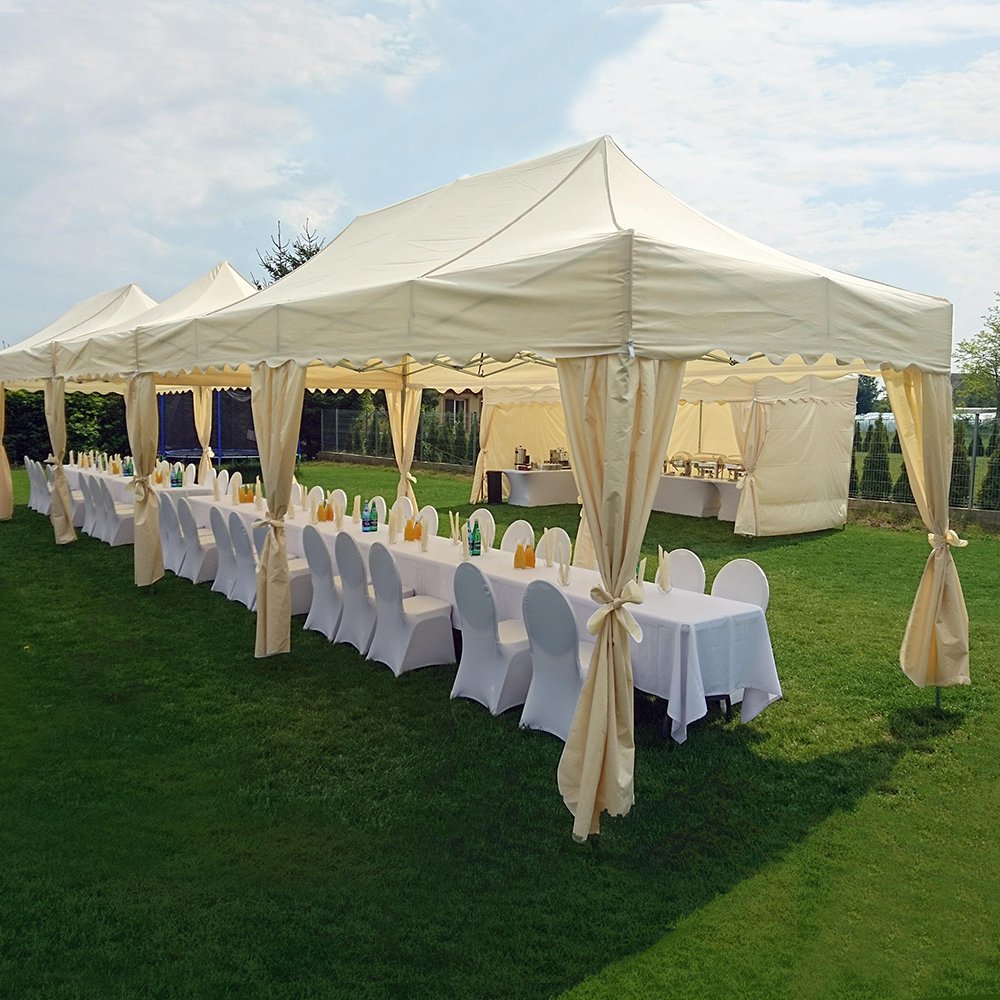
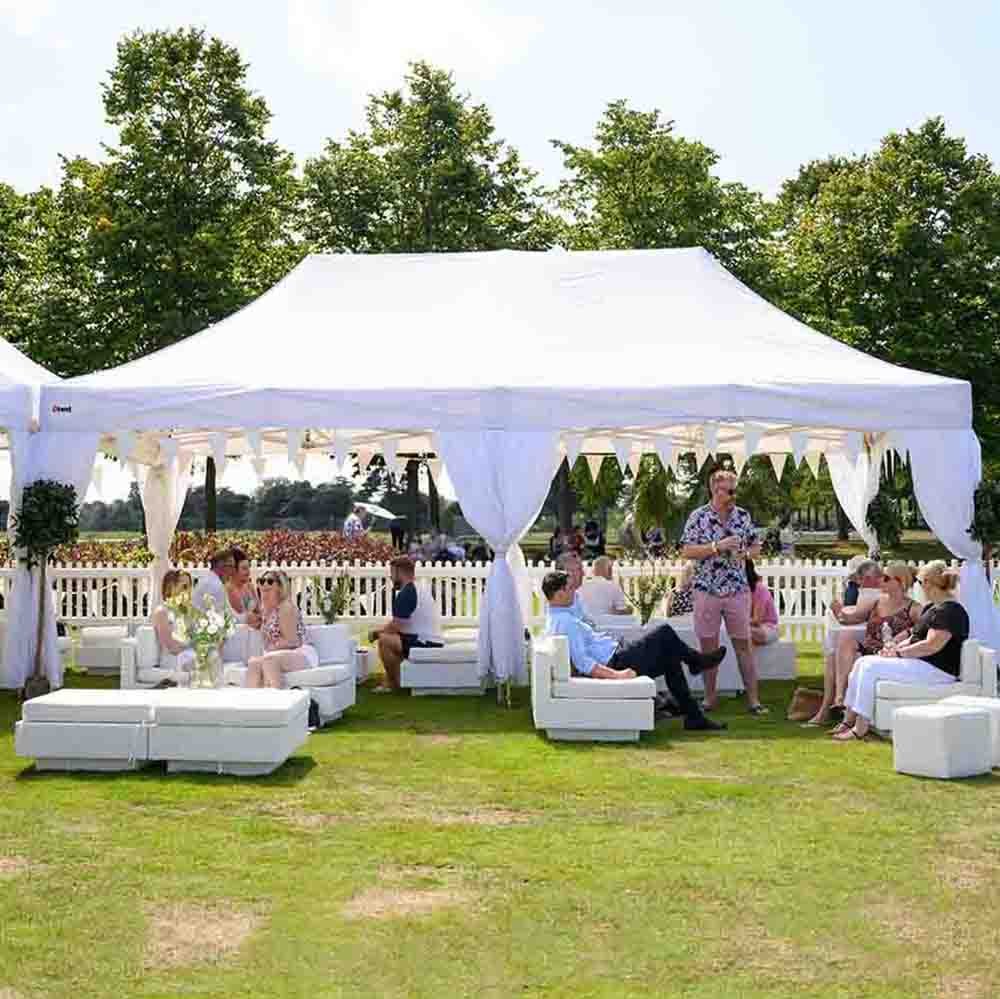
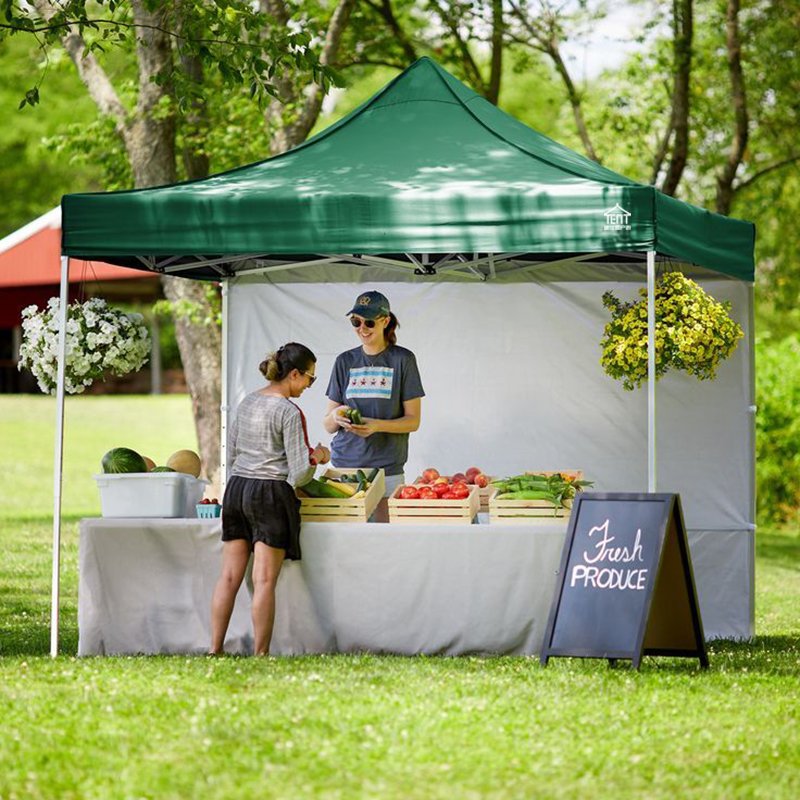
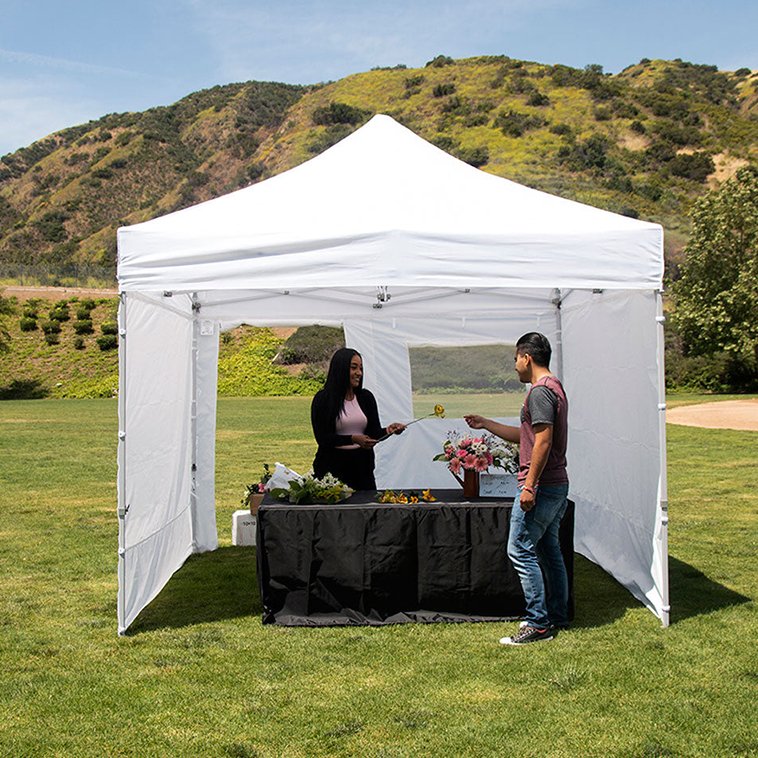

8-Application and maintenance of outdoor custom tents
8.1 Application scenarios of tents
Outdoor custom tents are widely used in many fields and scenarios due to their unique design and superior performance. The following are some typical application cases and actual effects:
In the field of mountaineering and hiking, outdoor custom tents provide explorers with a private space to shelter from wind and rain. In high-altitude areas, the climatic conditions are extremely harsh, and custom tents can withstand extreme weather such as strong winds and blizzards to ensure the safety of explorers. At the same time, the lightness and portability of the tent also make it an ideal choice for mountaineering and hiking activities.
In camping activities, outdoor custom tents also play an important role. Whether it is family camping or a gathering of friends, a fully functional and comfortable tent can bring a more pleasant experience to campers. Custom tents can be personalized according to the needs of campers, such as adding vents, setting up storage space, etc., to improve the convenience of use.
In professional fields such as outdoor photography and geological exploration, outdoor custom tents also play an indispensable role. For photography enthusiasts, a tent with good stability and waterproof performance can protect expensive photographic equipment from damage; for geological prospectors, tents provide temporary work and living space to support them in long-term operations in harsh environments.
In addition to the above fields, outdoor customized tents are also widely used in military, rescue and other fields. In military operations, tents can be used as temporary command posts, resting places for soldiers, etc.; at the rescue site, tents can provide emergency shelter for the victims and provide strong support for rescue work.
In general, outdoor customized tents have become one of the indispensable equipment in many fields and scenarios with their excellent performance and wide adaptability. With the popularization of outdoor activities and consumers’ pursuit of personalized needs, the market prospects of outdoor customized tents will be broader.
8.2 Use and maintenance of tents
During outdoor activities, tents are our temporary homes, and their proper use and maintenance are crucial. This not only ensures our comfort and safety, but also extends the life of the tent and maintains its good performance. Here are some suggestions on the use and maintenance of tents:
8.2.1 Precautions for using tents
1. Site selection and construction: When choosing a location to build a tent, avoid low-lying areas to prevent water accumulation. At the same time, make sure the ground is flat and free of sharp objects to prevent damage to the bottom of the tent. When building, follow the tent’s construction instructions to ensure that the support structure is stable to prevent collapse.
2. Avoid excessive pulling: During construction and use, avoid excessive pulling on the tent fabric to prevent tearing or damage. Especially when fixing the tent, use appropriate force and ensure that the fixing points are evenly distributed.
3. Pay attention to ventilation and warmth: Inside the tent, maintain proper ventilation to prevent moisture and mold growth. At the same time, in cold weather, pay attention to the warmth of the tent and ensure that the internal temperature is suitable.
8.2.2 How to maintain the tent
1. Regular cleaning: After use, the tent should be cleaned regularly to remove surface dirt and dust. Mild detergent and soft brush can be used for cleaning, but avoid using irritating chemical cleaners.
2. Drying and storage: After cleaning, make sure the tent is completely dry before storing. Avoid prolonged exposure to sunlight or humid environments to prevent fabric aging or mold. When storing, it is best to fold the tent into a loose state to avoid creases or damage caused by excessive compression.
3. Inspection and repair: Before and after each use, the tent should be inspected to see if there is any damage or wear. If damage is found, it should be repaired in time to prevent further deterioration. For damage that cannot be repaired by yourself, it is recommended to seek the help of professional repair personnel.
Proper use and maintenance of tents are important measures to ensure the smooth progress of outdoor activities and to ensure your own safety. By following the above suggestions, we can better protect the tent and extend its service life while creating a comfortable and safe outdoor residence for ourselves.
8.3 Storing and carrying the tent
As an important equipment for outdoor activities, the convenience of storage and carrying of outdoor customized tents is directly related to the user experience. Reasonable storage methods can not only protect the tent from damage, but also ensure that it can be quickly unfolded and used when needed. The following will introduce in detail the folding, storage and carrying methods of the tent.
The folding of the tent requires certain steps and techniques. Before folding, make sure that the inside of the tent is dry and clean to avoid residual moisture or dirt from damaging the tent material. Next, according to the structural characteristics of the tent, gradually fold the tent body, support poles and other components in an orderly manner. In this process, special attention should be paid to avoid excessive folding or twisting to prevent unnecessary stress or damage to the tent material.
After folding, the next step is to store the tent. Choosing a suitable storage bag is crucial to protecting the tent. The storage bag should have waterproof, breathable, wear-resistant and other characteristics to ensure that the tent is protected from moisture, mildew or wear during storage. At the same time, the size of the storage bag should also be moderate, both to accommodate the folded tent and to be easy to carry and store.
When carrying a tent, in addition to considering its weight and volume, you also need to pay attention to the comfort and convenience of the carrying method. For heavy tents, you can use backpack or towed carrying methods to reduce the burden on users. In addition, you can also use vehicle-mounted equipment or outdoor backpacks and other auxiliary tools to carry it to improve carrying efficiency and comfort.
In order to extend the service life of the tent and maintain good performance, users should also pay attention to the following points during storage and carrying: First, regularly check the folding and storage status of the tent to ensure that it is in the best protection state; second, avoid exposing the tent to direct sunlight or high temperature environment to prevent material aging or deformation; third, avoid contact with sharp objects or corrosive substances during carrying to prevent scratches or corrosion on the surface of the tent.
The storage and carrying of tents are important links that cannot be ignored in outdoor activities. By mastering the correct folding, storage and carrying methods, users can better protect the tent from damage and improve the convenience and comfort of outdoor activities.
9-Conclusion and Outlook of Tents
This study comprehensively and deeply explores multiple aspects of outdoor custom tents, including their design elements, manufacturing process, quality control, and application scenarios. Through systematic research and analysis, we have achieved a series of important results and findings.
In terms of design elements, we explored in detail the structural design, material selection, functional design, and humanized design of the tent. The structural design of the tent directly affects its stability and ease of use. By comparing and analyzing the advantages and disadvantages of different structural design types, we provide a useful reference for the structural design of outdoor custom tents. In terms of material selection, we deeply studied the performance and characteristics of various materials and their impact on the performance of the tent, providing a scientific basis for manufacturers to choose suitable materials. At the same time, we also emphasized the importance of functional design and humanized design in improving the tent use experience, and put forward a series of specific design suggestions.
In terms of manufacturing process and quality control, we introduced in detail the manufacturing process of outdoor custom tents, including key links such as material preparation, cutting, sewing, and assembly. By optimizing these links, production efficiency can be improved and production costs can be reduced. In addition, we also explained the importance of quality control and testing, and proposed effective quality control standards and testing methods to ensure that the products meet the design requirements and quality standards. We have also conducted some useful explorations and discussions on the innovation and optimization of manufacturing processes.
In terms of application and maintenance, we listed the application cases of outdoor custom tents in different fields and scenarios, and analyzed their actual effects. These cases fully demonstrate the wide application prospects and huge market potential of outdoor custom tents. At the same time, we also provide precautions and maintenance methods for tents to help users extend the service life of tents and maintain their good performance. In addition, we also introduce the folding, storage and carrying methods of tents so that users can carry and store tents more conveniently during outdoor activities.
This study has conducted a comprehensive study and discussion on outdoor custom tents and achieved a series of important results and discoveries. These results not only provide valuable reference and guidance for outdoor equipment manufacturers, but also promote the innovation and development of the outdoor tent industry and meet consumers’ demand for high-quality and personalized outdoor equipment. In the future, we will continue to pay attention to the latest research progress and market trends of outdoor custom tents, and contribute more wisdom and strength to the sustainable development of the industry.
Dtent-top professional tent manufacturer
We are a professional factory specializing in the production of custom-made tents, canopies, flags, and other event supplies. With 15 years of experience, we have a strong research and development team and impressive production capabilities. We have also served many brand clients and have earned a solid reputation in the industry.
Our dedicated team is committed to providing high-quality products and excellent service to our customers. We pride ourselves on our ability to tailor our products to meet the specific needs and requirements of each client, ensuring their complete satisfaction.

